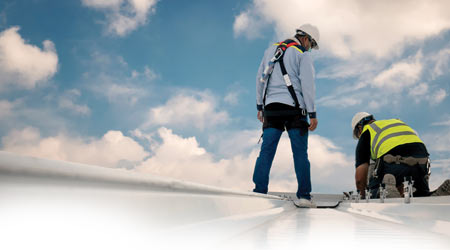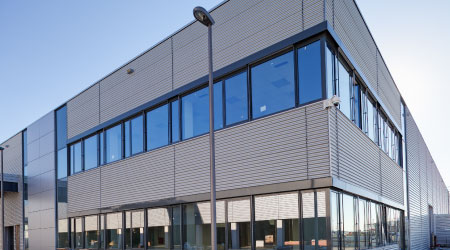 Roof inspection programs can be more effective if technicians perform regular roof management, which includes removing debris and cleaning around drains.
Roof inspection programs can be more effective if technicians perform regular roof management, which includes removing debris and cleaning around drains.Roof Inspections: The Benefits of Infrared Technology
Roof inspection programs can be more effective if technicians perform regular roof management, which includes removing debris and cleaning around drains.
Infrared technology has had a tremendous impact on facilities maintenance, including roof inspections. But as successful as infrared technology can be at detecting roof areas affected by moisture, maintenance and engineering managers must be aware of the limitations of thermal imaging. Variable weather conditions and differences among roof types can make it difficult to use the technology effectively. Working with the right environmental conditions is essential. A lack of solar loading, cloudy night skies, winds, or heavy dew can make it difficult to detect thermal patterns.
On cloudy days, the roof surface does not absorb enough thermal energy to make a capacitance-based inspection possible. Cloudy night skies impede a roof’s ability to radiate energy to deep space, making it harder to identify thermal differences. Any wind during the inspection window increases convective cooling of the roof’s surface and masks thermal patterns technicians are trying to detect.
As for types of roofs, heavily ballasted single-ply roofs and systems with a second layer of insulation can be challenging because of their complex thermal relationships. Inverted membrane roofs typically are not inspected using thermography.
Perhaps the most insidious limitation is that some single-ply membranes reflect long-wave infrared radiation. Unfortunately, the thermal imager most commonly used on facilities is a long-wave thermal imager, which sees this same wavelength of infrared energy. As a result, heat signatures of warmer adjacent buildings, trees and even the colder atmosphere can make it more difficult for the operator to discern if the thermal pattern is coming from the roof or is a false reflection.
Formal training, combined with support and experience, makes all the difference between success and failure. Roofs are complex structures, and inspections are often performed in less-than-ideal conditions. Technicians must understand the way conditions affect the thermal images they see.
Following proper inspection procedures is essential. Managers should review the standard for conducting roof-moisture inspections, ASTM C1153-97 (2003) the Standard Practice for Location of Wet Insulation in Roofing Systems Using Infrared Imaging. It addresses types of infrared surveys and is available online at www.astm.org.
Managers have many options for thermal imagers, and it is hard to go wrong with most systems. Still, it is important to do the homework, make sure to consider the right equipment specifications, and test several cameras before making the purchase.
— Matt Schwoegler is a building thermographer and infrared instructor with The Snell Group. Don Thurmond joined The Snell Group in 2005 after spending over 35 years with Ford Motor Co., where he established a world-class infrared thermography inspection program, including using infrared technology for roof-moisture inspections.
Related Topics:















